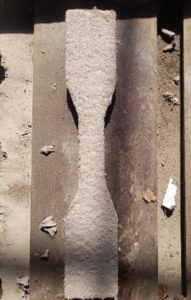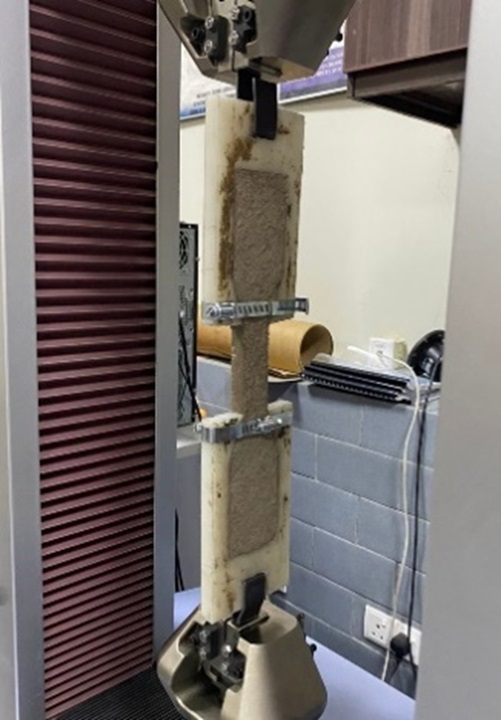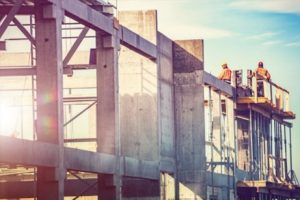Concrete is one of the most consumed building materials in the world. It is a composite material composed of cement, aggregate (usually sand and gravel), and water. Concrete is strong and durable, making it an ideal choice for construction. However, concrete has several drawbacks. Firstly, it is a brittle material that cannot absorb earthquake shocks, meaning that it can fail catastrophically in a major earthquake. Secondly, concrete always requires steel rebars as reinforcement, which are becoming increasingly expensive as steel prices rise. Third, cement production is responsible for 5% of global CO2 emissions, making concrete a significant contributor to global warming. Finally, concrete does not last forever; millions of tons of concrete waste are generated each year from structures constructed in the 19th century. As our understanding of the impacts of construction on the environment grows, it is important to consider both the benefits and drawbacks of concrete before using it in new projects.
So, there is a need for a more efficient, sustainable, and resilient material to fulfill the demanding needs of modern infrastructure. About a quarter of a century ago, Prof. Victor C. Li at the University of Michigan, developed a special type of concrete, inspired by seashells microstructure, and named it Bendable concrete. Bendable concrete scientifically termed as Engineered Cementitious Composite (ECC) is a type of Ultra-High-Performance Concrete in which short discrete fibers are added to make it flexible and ductile. Its special properties make it possible to build highly safe, cost-effective, and long-lasting earthquake-resistant construction with lower carbon footprints. Due to inherent ductility and improved tensile capacity, ECC can help to reduce 30-40% steel reinforcement and 25-30% concrete volume in the structure reducing the overall cost of the project by 20-30%.
Pakistan is ranked as the 6th most vulnerable country in the world with most of the structures deficient against earthquakes. The results of what has been seen in the 2005 earthquake in which 80,000 casualties and huge economic losses were reported. According to Global Facility for Disaster Reduction and Recovery (GFDRR), Pakistan is marked as having a high chance of potentially damaging earthquake shaking in the next 50 years. Realizing the urgency of the situation, Students, Sikandar Ali Khokhar and Touqeer Ahmed along with their advisor Dr. Rao Arsalan Khushnood at NUST Institute of Civil Engineering started working on the implementation of Bendable concrete in Pakistan to provide a safe and economic alternative against deadly earthquakes. During 2 years of R&D, they developed a more rapid designing tools and simplified adoption methodologies that removed the uncertainties in the way of commercialisation of Bendable concrete. Currently, they are also working at National Science & Technology Park (NSTP) with the startup named “Bendcrete”. The company is working to create a more resilient and sustainable society by using their innovative composite. They aim to mitigate the damage potential of high intensity ground motion, as well achieving better structural integrity.


Advantages:
ECC is designed in such a manner, to remove all the issues related to the use of conventional concrete. Following are the main advantages of bendable concrete over conventional concrete:
- Highly ductile (100 times as compared to conventional concrete)
- Cost Effective (due to reduction in steel requirements)
- Lightweight (density about 1800 Kg/m3)
- Highly durable (due to multiple micro cracking phenomena which can increase service life)
- Improved thermal properties
- Easy to cast and place (due to self-consolidating rheology)
Applications:
While bendable concrete is not yet widely used, its potential applications are numerous, and its development represents an important step forward in the quest for more sustainable construction materials. The major potential applications of bendable concrete are as under:
- Earthquake resistant building structures
- Long span bridges
- Marine structures
- Link slab in bridge structures
- Tunneling




It’s easy to see why developed countries are turning to this innovative product – it’s safe, durable, and affordable. With so many advantages over traditional concrete, it will be no wonder that bendable concrete will be an increasingly popular construction material in Pakistan.
Team Members:
Sikandar Ali Khokhar
UG-18 Alumnus NICE
C.T.O Bendcrete
Sikandar.cto@bendcrete.org
Touqeer Ahmed
UG-18 Alumnus NICE
C.O.O Bendcrete
touqeer.cto@bendcrete.org
The author is an Associate Professor and HoD Research at School of Civil and Environmental Engineering, National University Sciences and Technology (NUST). He can be reached at Arsalan.khushnood@nice.nust.edu.pk.
Researcher Profile: https://bit.ly/3feXw1D






